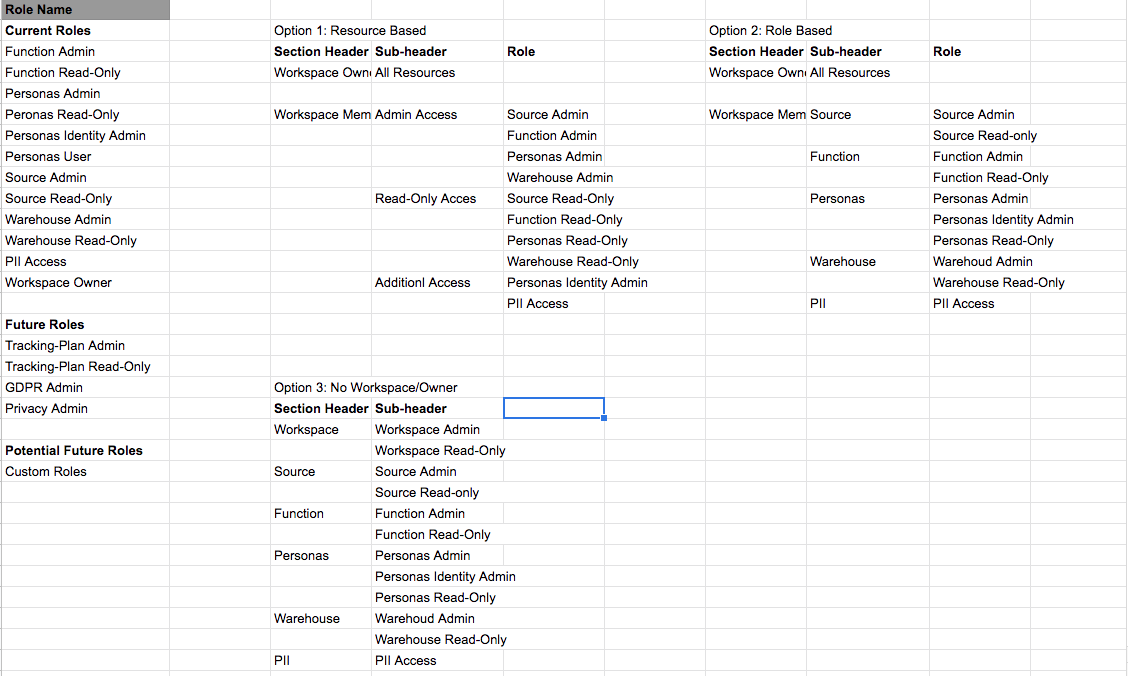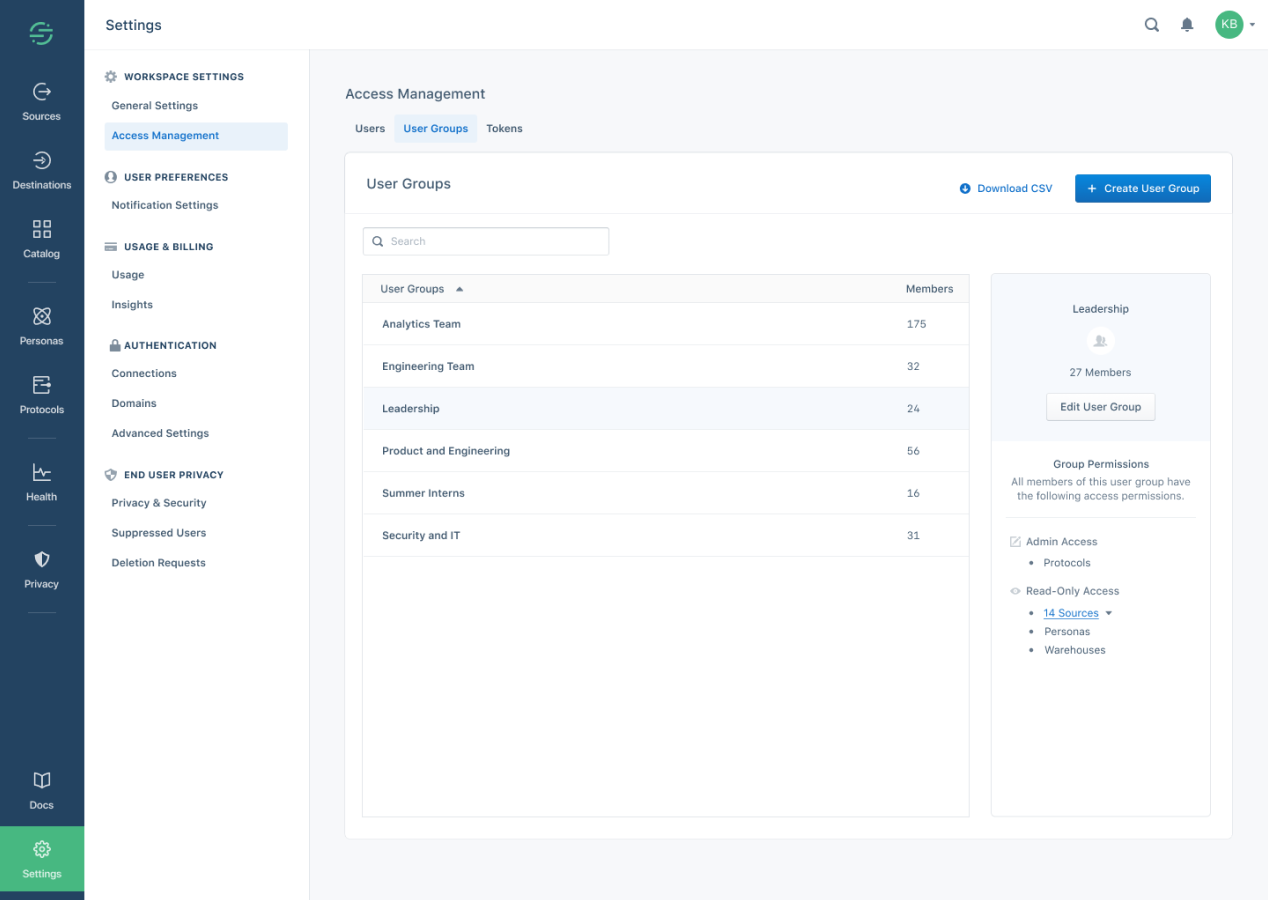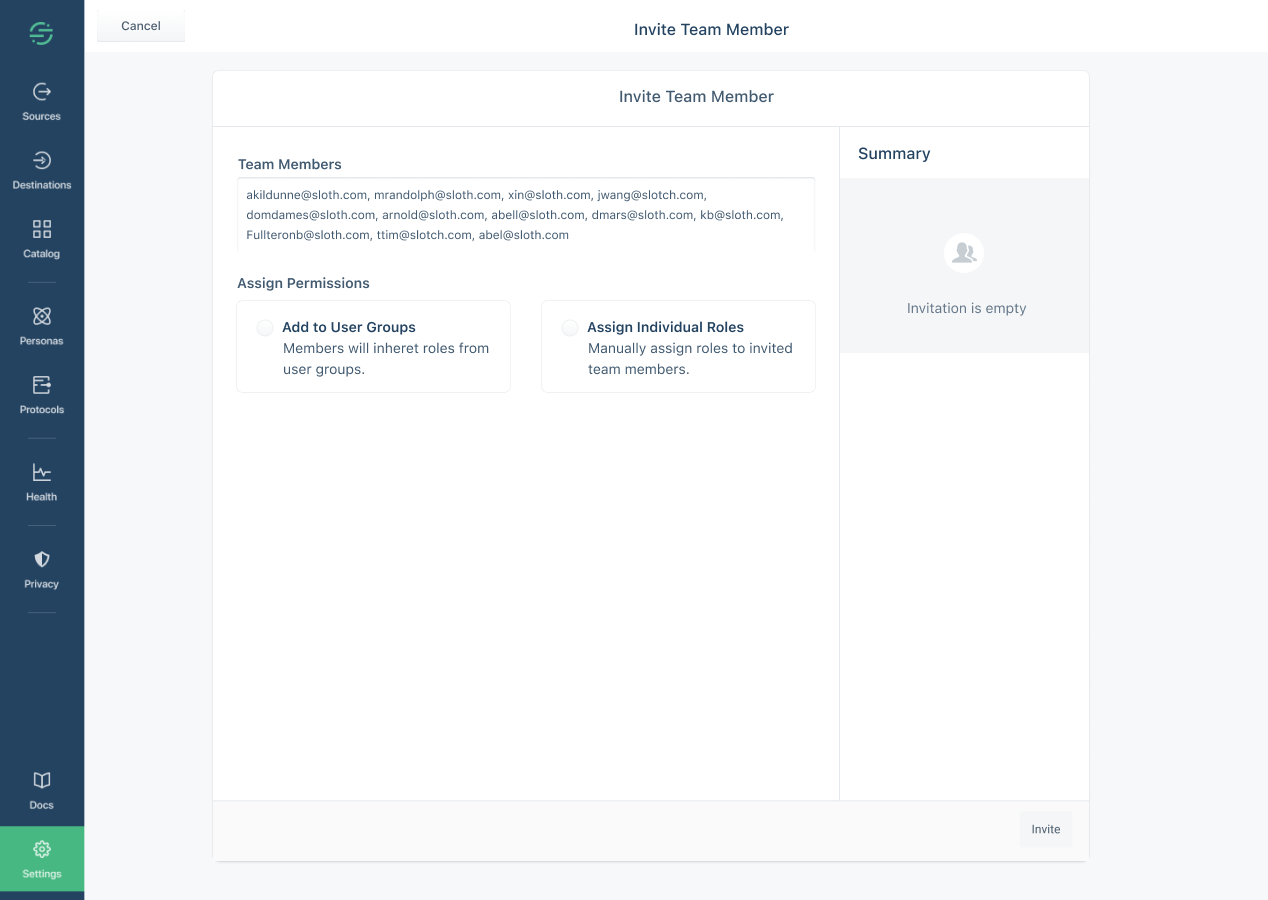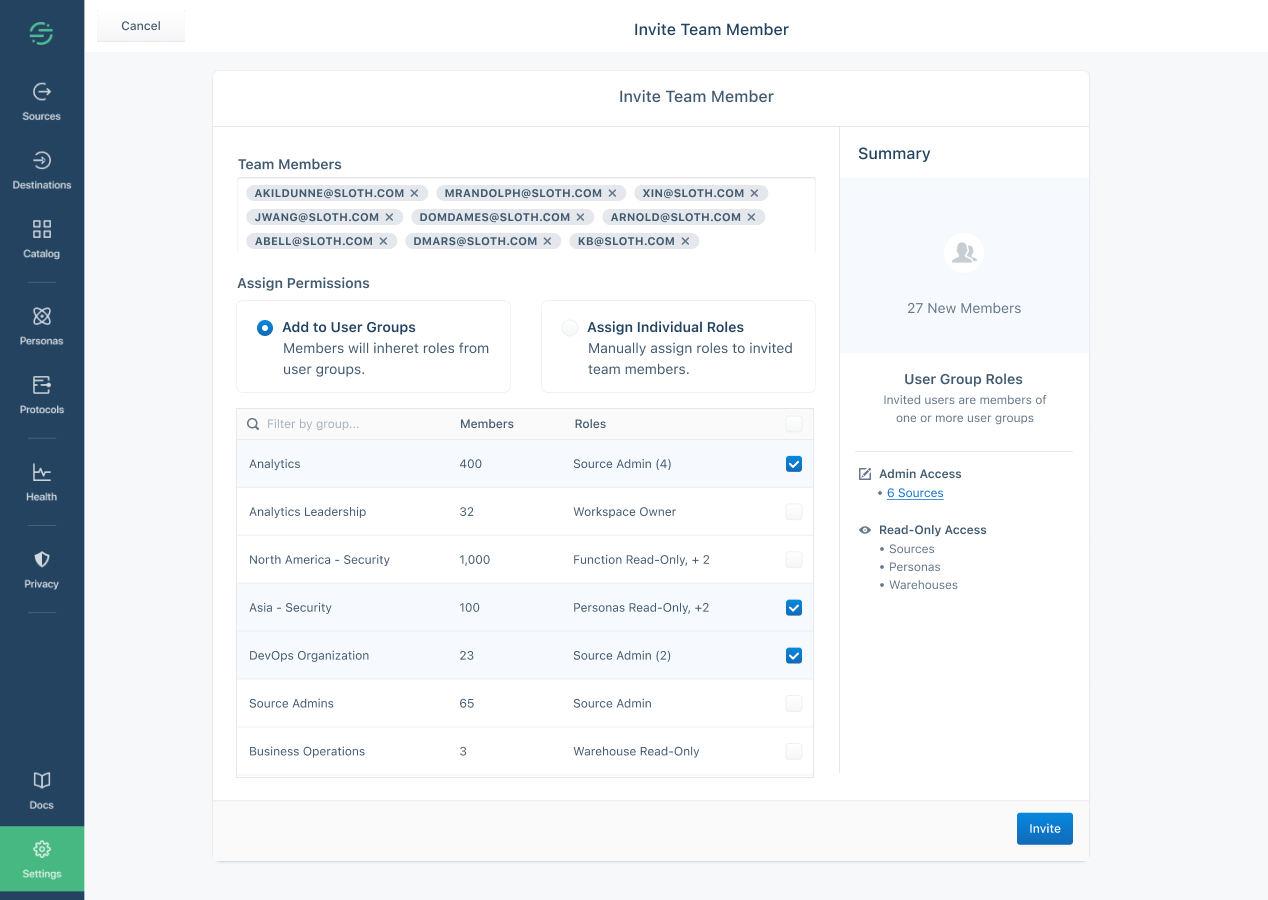Segment Access Management
Segment is a tool that helps teams collect, manage, and share data across organizations. As a product designer at Segment, I re-designed the Access Management system — which allows administrators to control and manage how users can access parts of Segment.
I worked with a product manager and engineers to introduce a new management workflow that reduced customer support requests and retained enterprise customers.
Team
1 Product Manager
3 Engineers
1 Design Lead
Role
Product Design
UX/UI
Problem
Segment’s original Access Management gave administrators the basic ability to assign and edit user permissions, but this could only be done on a user-by-user basis.
While this model worked for smaller organizations, Access Management was a time consuming and error prone for enterprise customers that manage hundreds of users. As Segment’s list of enterprise customers grew, it became business critical for Segment to improve the management workflow and retain these enterprise customers.
Administrators could only edit permissions one at a time
Goal
The goal of this work was to move our Access Management experience towards enterprise grade maturity by:
Introducing new “user group” functionality to simplify how administrators manage permissions in bulk
Designing user groups to scale with the addition of future configurations
Address pre-existing usability issues in Access Management
PROCESS
Old Overview
Editing Permissions
Deleting a User
Creating and Inviting
Inheriting insights and assumptions
I worked off interview insights and early design explorations from my design lead and product manager to understand the problem space.
To help inform my own understanding of the space, I conducted a competitive analysis to compare and document access management designs from enterprise and B2B SaaS tools.
Findings
User Groups are a common an expected way of managing permissions
Administrators consider assigning and editing permissions as serious actions and benefit from extra confirmation
While Segment’s Access Management complexity is more similar to enterprise ones, it uses interaction patterns more similar to B2B companies
Enterprise tools had more ways of summarizing information compared to B2B tools
Decisions
Focus on simplifying the management experience via User Groups
Enhance the management experience by helping administrator confirm their choices
Consider interaction patterns that afford more scalability
Exploration and Iteration
Iteratively imagining and scoping requirements
I worked with my PM to understand specific requirements for user groups.With a potentially large scope, it was crucial for our team to stay focused on a small set of jobs to launch an initial user group release. As we documented requirements, I made initial wireframes and flows to understand how those requirements might play out.
Considering ways to better confirm choices
Idea: I tried organizing the way that roles were displayed to help administrators confirm choices during the actual selection process. To further support feedback, I considered ways of summarizing permissions and roles.
Experimenting with patterns
Idea: With a large emphasis on consistency, I initially tried adapting the side sheet pattern for User Groups. I explored different iterations with a focus on increasing space for management interactions.
Gathering Feedback
I used a combination of internal and external feedback to drive iterations. With weekly design critiques and project meetings, I gathered feedback from a handful of internal stakeholders and subject matter experts.
To validate final design directions and identify usability issues, I conducted usability tests with 6 Segment administrators and learned:
Administrators have many mental models for organizing roles, but it’s crucial to explicitly define whatever roles are available
Administrators found summary cards useful, especially when creating permissions for the first time
A full page experience helped administrators focus and find information to make permission decisions and helped make the management experience more consistent with other editing flows in Segment
As a result, I concluded that final designs should:
Keep permissions as-is, but plan future research to understand how it currently serves administrators
Include summary cards, especially during creation flows
Utilize to a full page editing experience, rather than a side-sheet
final design overview
New functionality to support a faster workflow
The major accomplishment of this work was introducing capabilities for administrators to group users under shared permissions and invite new users into existing groups. The amount of work, time, and chance for errors is decreased with these changes. With changes happening in bulk, I added a summary view to provide extra feedback when making changes.
Utilizing a better pattern for management
With the support of my design team, I made the decision to move towards a full-page edit experience — a pattern that exists with more serious editing experiences in other parts of the Segment app. This allowed for more more space to create a tabbed view for the management of permissions and user group membership and for the addition of a summary card.



Impact and Status
The updated Access Management and User Group functionality was slowly rolled out to our business tier accounts. The team plans on monitoring tickets, feedback, and user group functionality to evaluate the work.
The team is planning on conducting additional user research to evaluate next steps for Access Management and prioritize new functionality and maintenance work for the next quarter.


![Scan Jun 22, 2020 2].jpg](https://images.squarespace-cdn.com/content/v1/564a7092e4b0d533e89fad2d/1592865831679-285O54CFE4IRAL1PVGP3/Scan+Jun+22%2C+2020+2%5D.jpg)


















